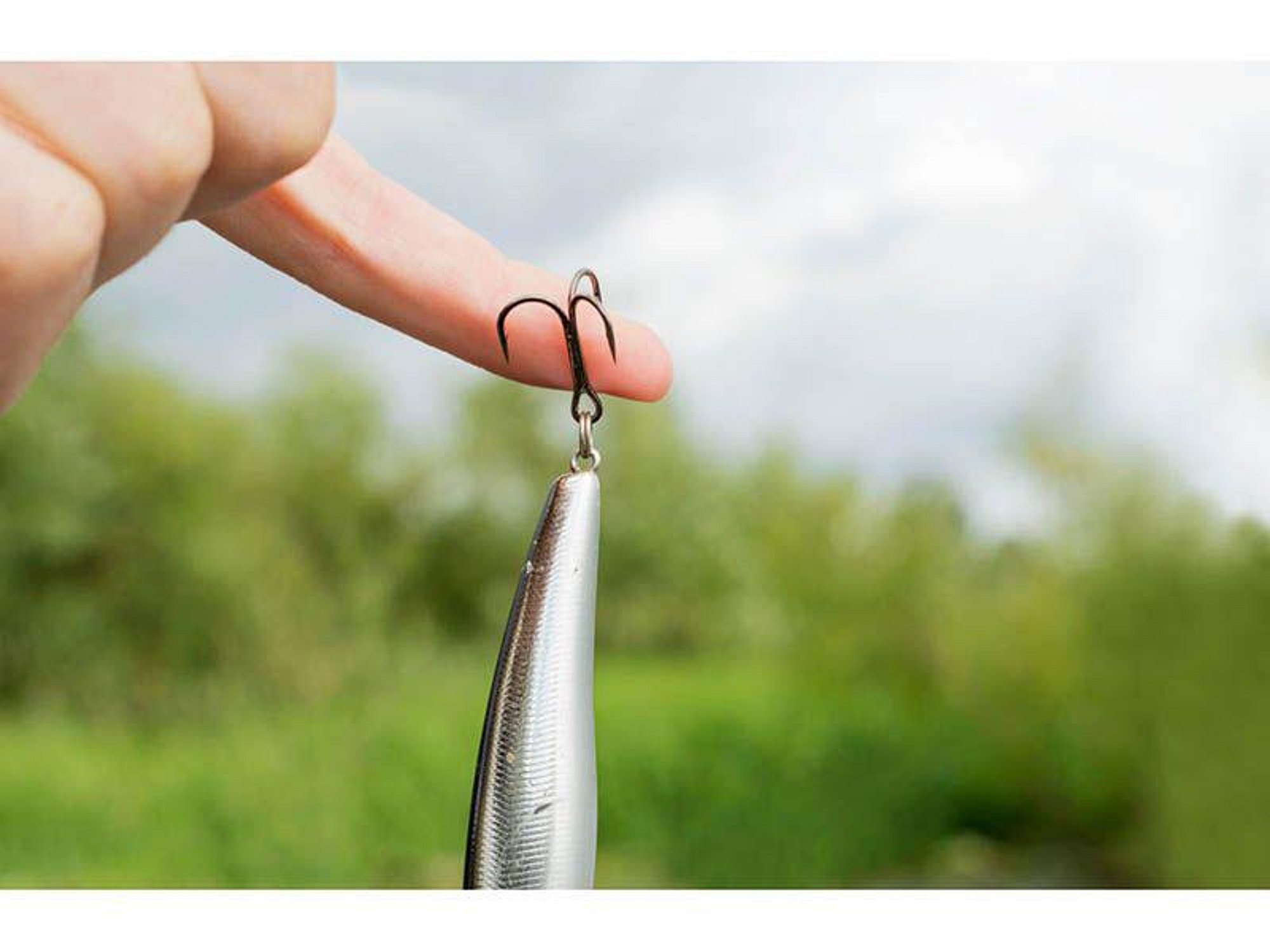Removing a Fishhook

If you enjoy going fishing, it's important to be prepared in case you accidentally get a fishhook caught in your skin.
Caution
There are two circumstances when you should not try to remove a fishhook on your own:
When a fishhook is caught in the eye or face.
When the hook is so deeply embedded in the skin that removing it would cause more serious injury.
In these cases, cut the fishing line as close as possible to the hook, so that it doesn't tug on the hook. Then, if you have first aid supplies handy, use them to dress the area to avoid further injury. First, take two gauze pads and gently place them on either side of the exposed hook. Be careful not to press the hook down into the skin. Make sure the gauze pads are level with the top of the hook. Then carefully bandage over the pads and the hook. The goal is to prevent the hook from penetrating deeper while you seek medical help.
To remove a fishhook
What you'll need
A pair of pliers or wire cutters, mild soap, water, and bandages.
What to do
If only the point of the fishhook has entered the skin, gently push down on the shank of the hook to help disengage the barb (if there is one) then pull the hook back out the way it went in. This technique works best with barbless fishhooks.
If the hook is a little more deeply embedded, use the same technique with the aid of a string or fishing line. Place a loop of string around the middle point of the curved part of the hook. While pushing down on the fishhook's shank, firmly and quickly pull the string to remove the hook.
If the point and the barb of the hook have penetrated the skin more deeply, do not pull the hook -- the barb could cause unnecessary injury. In this case, the best strategy is to continue to push the hook through the skin until the barb comes out. Using the pliers or clippers, snip off the barb. Then carefully remove the remaining part of the hook by gently pulling on the end attached to the fish line.
Whichever method you choose to use, be sure to wash the entry and exit points with mild soap and running water. After drying off the site, apply a bandage.
Even after you have removed the hook, there's always the possibility that an infection could develop. If you haven't been vaccinated in the last 10 years, you may need a tetanus booster shot. This means that even if you've successfully removed the hook by yourself, it's a good idea to see a doctor.
References
Handbook of First Aid and Emergency Care, American Medical Association.
American College of Emergency Physicians, First Aid Manual. DK Publishing.
Gammons M et al. Fishhook Removal. American Family Physician. http://www.aafp.org/afp/20010601/2231.html
Related Posts
Dogs Can Tell When You’re Talking to Them, and Might Prefer Female Voices
THURSDAY, Aug. 24, 2023 (HealthDay News) -- Mothers use sing-song language to...
Most Older Americans Believe Health Care Workers Should Be Vaccinated: Poll
TUESDAY, Sept. 14, 2021 (HealthDay News) -- Eight in 10 older Americans think...
AHA News: Your Next Doctor’s Prescription Might Be to Spend Time in Nature
MONDAY, Oct. 18, 2021 (American Heart Association News) -- Dr. Robert Zarr loves...
¿Las redes sociales hacen daño a los niños? Quizá dependa de su edad
MARTES, 28 de marzo de 2022 (HealthDay News) -- El riesgo de que las redes...
